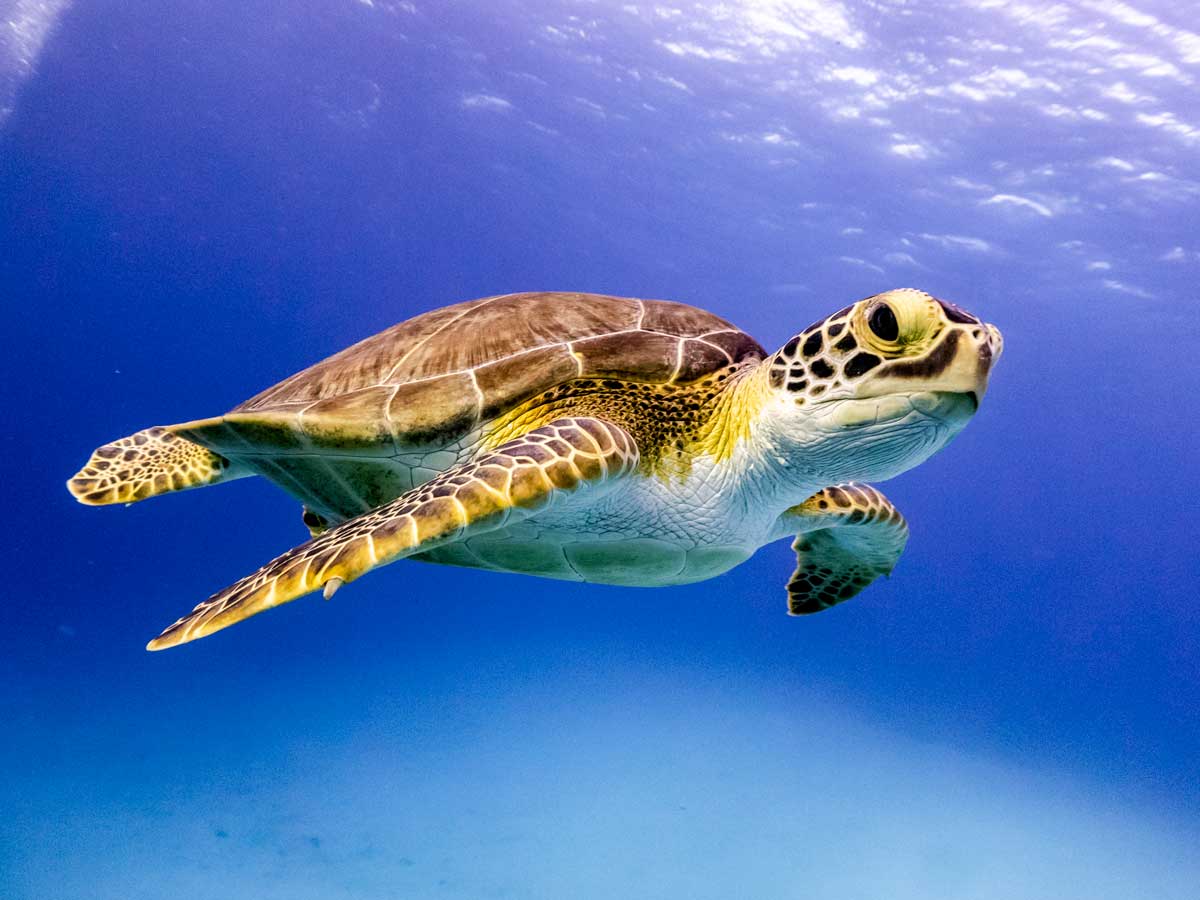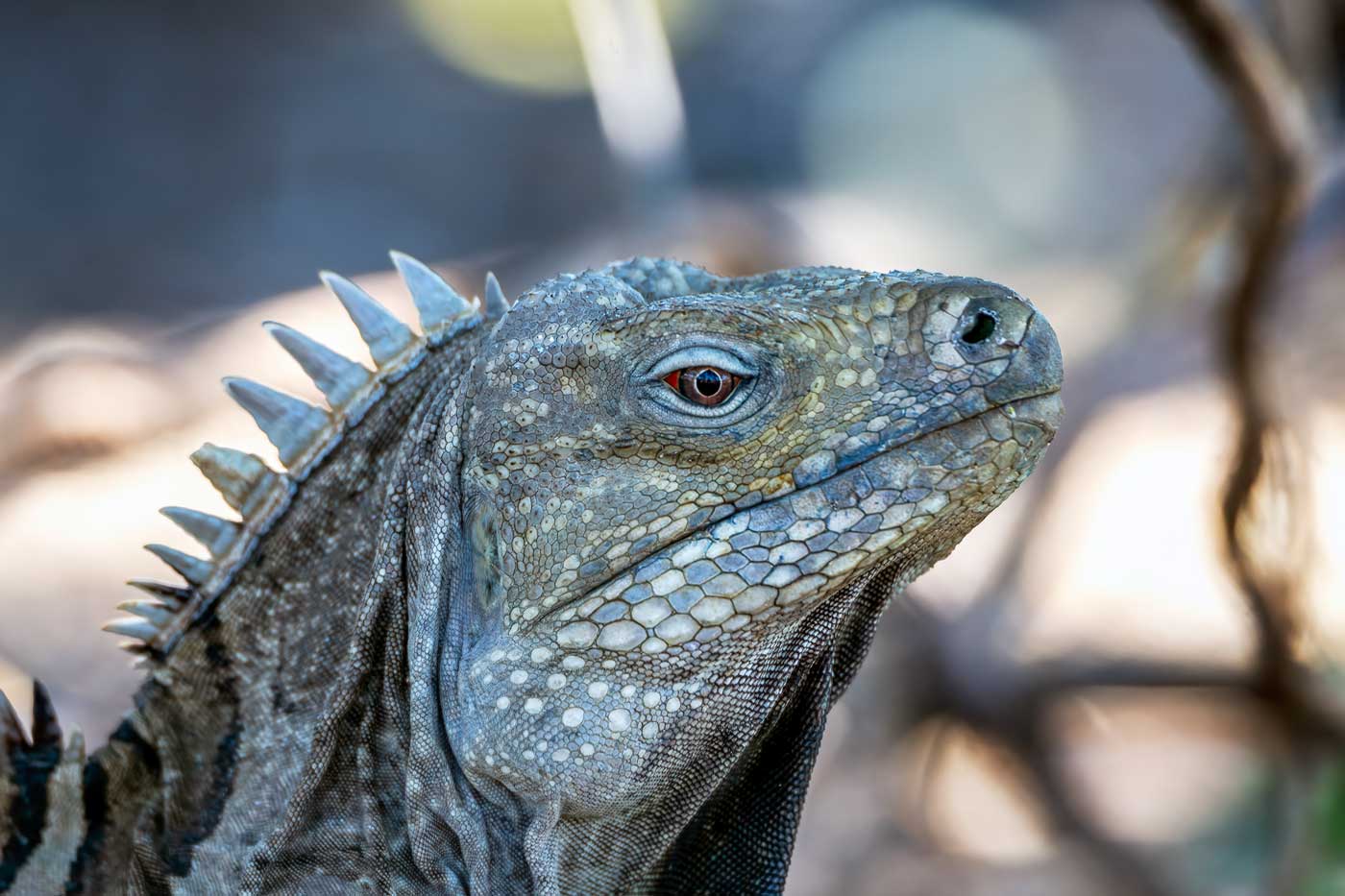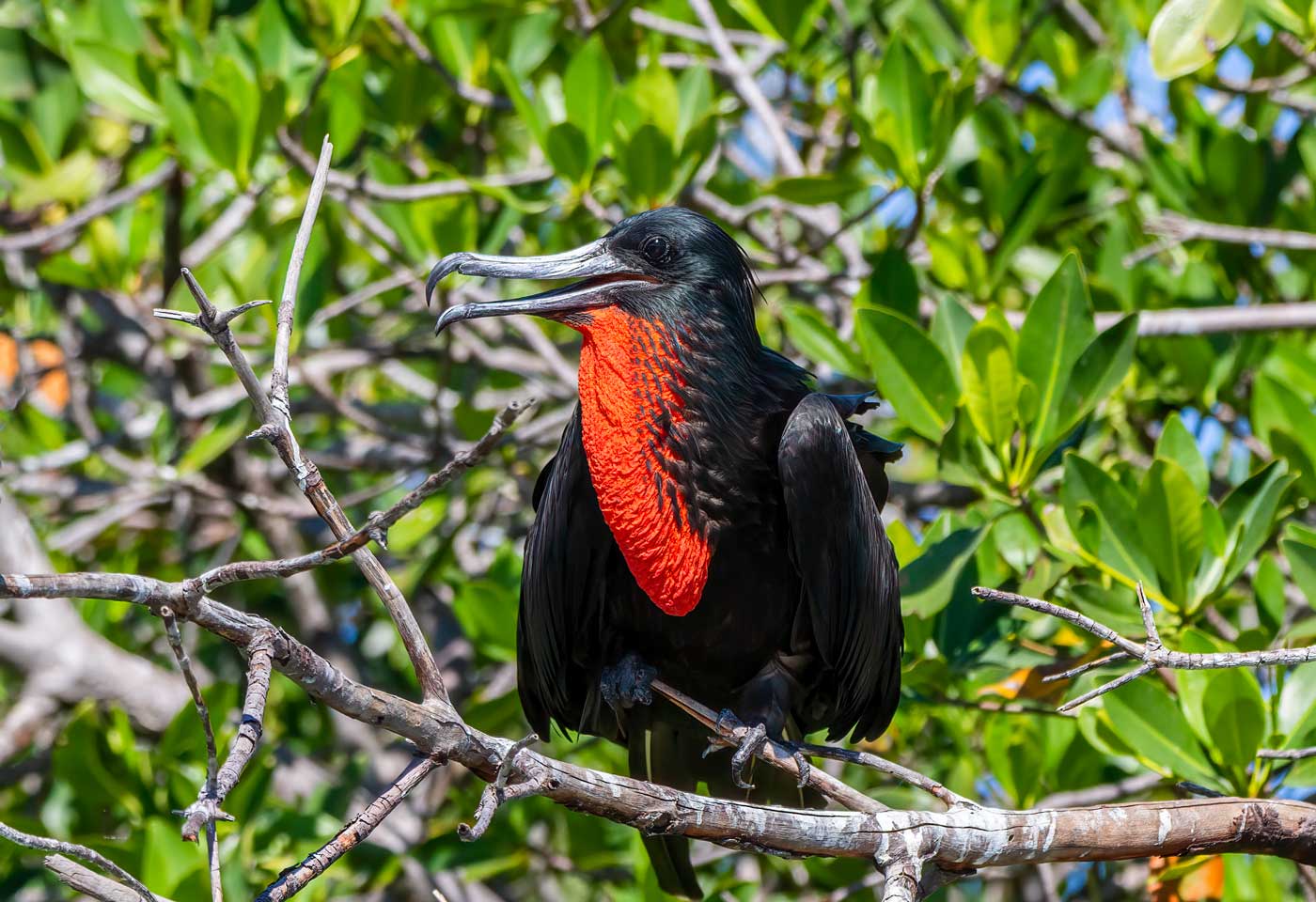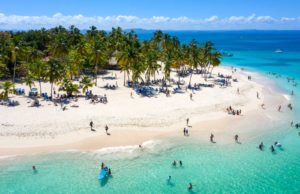Wildlife & Nature
Wildlife in the Dominican Republic
Ricord's Iguana (Cyclura ricordi), Lake Enriquillo
Photo: Alamy
The Dominican wildlife dynamic is beginning to take center stage, as travelers are discovering the natural wealth of the DR's unique ecosystem.
Share
Since the time of the native Taíno, the Dominican Republic has preserved a significant portion of its ecological landscape and rich endemic Biodiversity, with over 6,000 plant species that tropical birds, land mammals, reptiles, and amphibians call home.
This greater Antillean nation is surrounded by Caribbean and Oceanic waters that sustain more than 800 species of fish - from mammoth humpback whales, manatees, and dolphins - to smaller crustaceans and mollusks.

Hawksbill sea turtle
Photo: Shutterstock
Aquatic Life
The Dominican Republic is a high-ranking destination for recreational snorkelers, deep-sea divers, and marine biologists worldwide.
Along the scenic coastal shores, locations like Monte Criti's Subaquatic National Park are decorated with brilliant coral reefs that can extend up to 249 Km2 - as the depths in Los Haitises National Park serve as a breeding ground for northern humpback whales in their mating season.
The warmer Caribbean coastal regions of Pedernales, La Romana-Bayahibe, and Punta Cana possess the ideal environment for prehistoric manatees, bottlenose and spinner dolphins, endangered hawksbill sea turtles, and colorful coralline fish.
Natural Habitats
You'll find all types of aquatic creatures in Rivers, Lakes, Subterranean Caverns, and Lagoons through and out.
Protected Reserves

Ricords Iguana (Cyclura ricordi) on Isla Cabritos
Photo: Javier Gautier
Land Mammals and Reptiles
Although the island of Hispaniola isn't known for having a wider variety of land mammal species - compared to their aquatic and winged counterparts - the few that roam are unique in their own right.
At the Jaragua National Park, part of the La Selle-Jaragua-Bahoruco-Enriquillo Biosphere Reserve that spans the Haitian-Dominican border, a varied mammal and reptile presence can be appreciated in the dry subtropical weather like the prehistoric solenodon, ricord's, and rhino iguanas, and the hutia congo.
The largest reptiles within the reserve are American crocodiles that thrive in the waters of Lake Enriquillo, the largest lake in the Caribbean.
Flying through the night sky, sooty-mustached and Antillean ghost-faced bats are the most abundant mammal species living amidst the trees.
Natural Habitats
The best places to catch any one of these furry or scaly creatures are broadleaf, dry and semi-arid subtropical forests, coconut groves, and dense vegetation.
Protected reserves
- Sierra de Bahoruco National Reserve
- Isla Cabrito National Park
- Las Neblinas Natural Reserve

Magnificent frigatebird (Fregata magnificens), Azua
Photo: Javier Gautier
Birdlife
321 bird species are widely present throughout the national territory and are found in every environment, whether it be desert savannas or pine-covered mountain ranges.
As one of the greater Antillean nations, the Dominican Republic offers 1,288 kilometers of coastline that serves as a transient haven for pelagic or oceanic bird species from around the Caribbean. Many of which include the bridled and sooty tern, red-footed booby and brown noddy, the magnificent frigatebird, and yellow warbler.
Within the mainland and significant rural territories in the El Cibao region, 31 rare and endemic tropical birds show off the eccentric qualities and color schemes that make up their plumage.
Among the most-watched and sought after by international bird enthusiasts and locals alike are:
- - Hispaniolan Woodpecker
- - Trogón
- - Antillean Euphonia
- - Chicuí Barrancolí
Natural Habitats
Birds are the most all-encompassing fauna on La Hispaniola and can be found in every oceanic, terrestrial, and aerial space. But if you're looking for a broader range of diversity, look no further than the Cordillera Central (central mountain range), the Hispaniolan pine and mangrove forests, river basins, and national parks.
Protected Reserves
- - Laguna Oviedo
- - Monte Cristi National Park
- - Cotubanamá National Park
Explore Dominican Wildlife and Nature
Sea, Salt and Whalesong: Waiting for the Whales in Samaná
Samaná is one of the best places in the world
Río San Juan: a low-profile destination on the north coast
This low-profile coastal attraction has lots to offer but has
Explore Cueva de las Maravillas – the Cave of Wonders
Just outside La Romana, the Cueva de las Maravillas cave
Get Lost in the Wilderness of Monte Cristi National Park
Get the basic information for your trip to Monte Cristi,
A Pocket Guide to Samaná
Step into the outstanding Peninsula of Samana Dominican Republic, and
Best Bird Watching Sites in Dominican Republic
Our Best Selections for Your Dominican Birdwatching Checklist
Get up close with wildlife in the Sierra de Bahoruco National Park
In the Southwestern area of Hispaniola, only a couple of
Constanza: The Unexpected Dominican Destination
Venture beyond the beaches and into the mountains in the
Explore Bahía de Las Águilas
Go glamping in Bahía de Las Águilas, a pristine paradise
Categories
Tags
Share
Subscribe to our newsletter
Get more travel inspiration, tips and exclusive offers sent straight to your inbox

